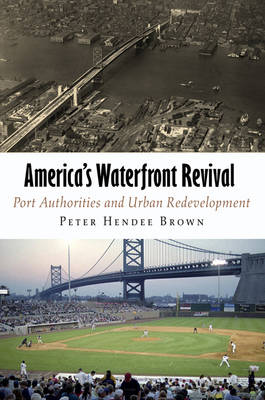The City in the Twenty-First Century
2 total works
Since the early years of the twentieth century, public authorities have been providing an enormous share of the public infrastructure in the United States and have shaped our urban environment in powerful ways. Politicians have continued to create new public authorities, but many older ones remain influential, adapting to ever-changing economic trends, technologies, and user demands by entering new lines of business. Among the authorities that have continued to change and have remained relevant are many of the nation's industrial-era port authorities, including the Tampa Port Authority, the Port of San Francisco, the Port of San Diego, and the Delaware River Port Authority.
Despite their unique histories, markets, and geographic locations, these four ports have many similarities. Most important, as globalization and technological change led to declines in shipping, they all evolved from single-purpose maritime cargo-handling operations into diversified business organizations focused on waterfront revitalization. All four ports became deeply involved in real estate development in support of nontraditional maritime and nonmaritime public and commercial uses.
In America's Waterfront Revival, Peter Hendee Brown examines the experiences of these four port authorities, considering three important questions. First, how did external and internal forces encourage or impede these authorities as they engaged in new functions? How did the port authorities transform themselves as organizations in order to implement waterfront redevelopment? Do public authorities change as institutions when they diversify into new functional areas and, if so, do abstract theoretical models of public authorities adequately account for this institutional evolution?
Drawing on a wide range of sources, including enabling legislation, annual reports, financial statements, strategic business plans, land use plans, audits, media accounts, and interviews, this book delivers significant new findings on the opportunities and challenges existing authorities face when they engage in new functions.
Cities are always changing: streets, infrastructure, public spaces, and buildings are constantly being built, improved, demolished, and replaced. But even when a new project is designed to improve a community, neighborhood residents often find themselves at odds with the real estate developer who proposes it. Savvy developers are willing to work with residents to allay their concerns and gain public support, but at the same time, a real estate development is a business venture financed by private investors who take significant risks. In How Real Estate Developers Think, Peter Hendee Brown explains the interests, motives, and actions of real estate developers, using case studies to show how the basic principles of development remain the same everywhere even as practices vary based on climate, local culture, and geography. An understanding of what developers do and why they do it will help community members, elected officials, and others participate more productively in the development process in their own communities.
Based on interviews with over a hundred people involved in the real estate development business in Chicago, Miami, Portland (Oregon), and the Twin Cities of Minneapolis and St. Paul, How Real Estate Developers Think considers developers from three different perspectives. Brown profiles the careers of individual developers to illustrate the character of the entrepreneur, considers the roles played by innovation, design, marketing, and sales in the production of real estate, and examines the risks and rewards that motivate developers as people. Ultimately, How Real Estate Developers Think portrays developers as creative visionaries who are able to imagine future possibilities for our cities and communities and shows that understanding them will lead to better outcomes for neighbors, communities, and cities.

